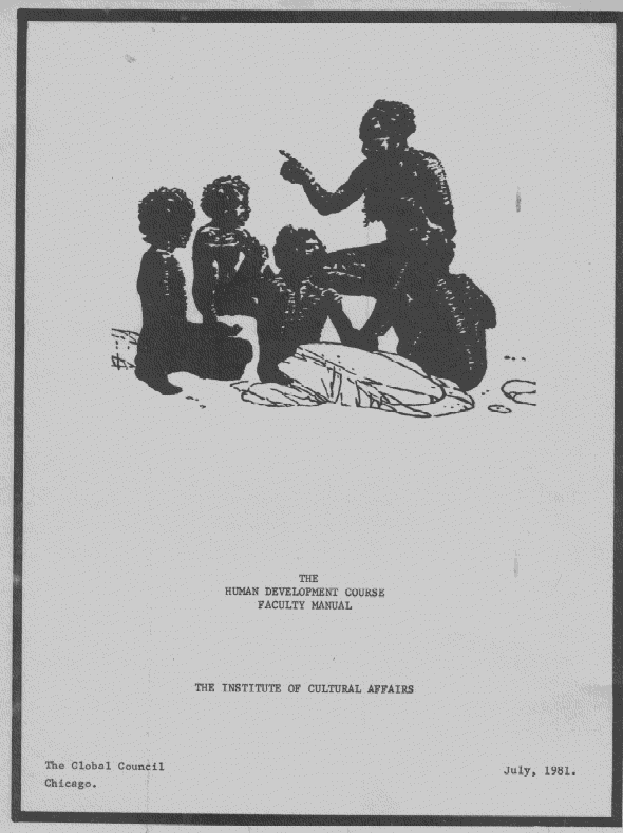
 |
|
|
|
|
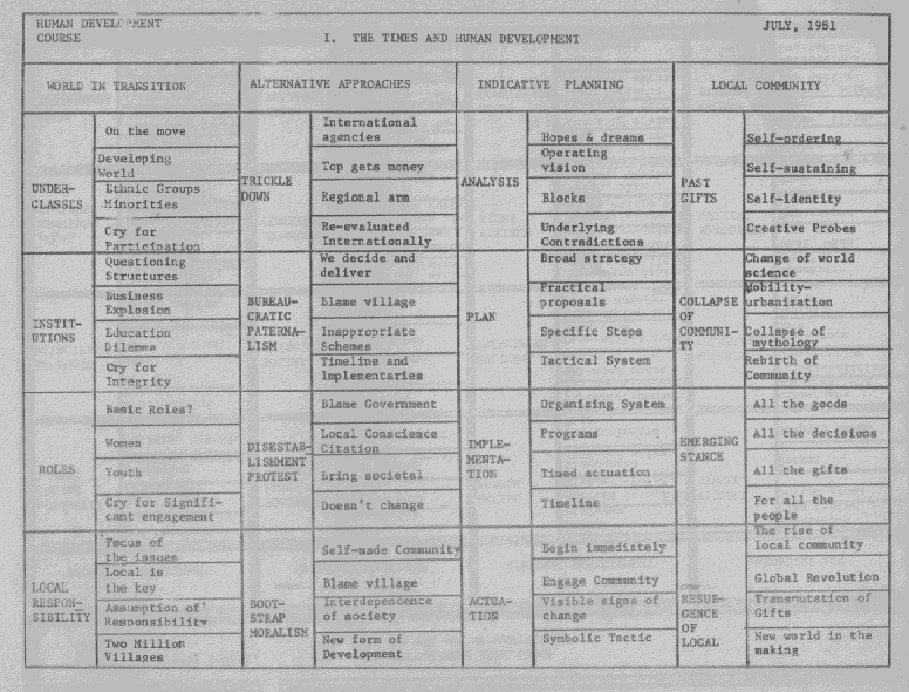 |
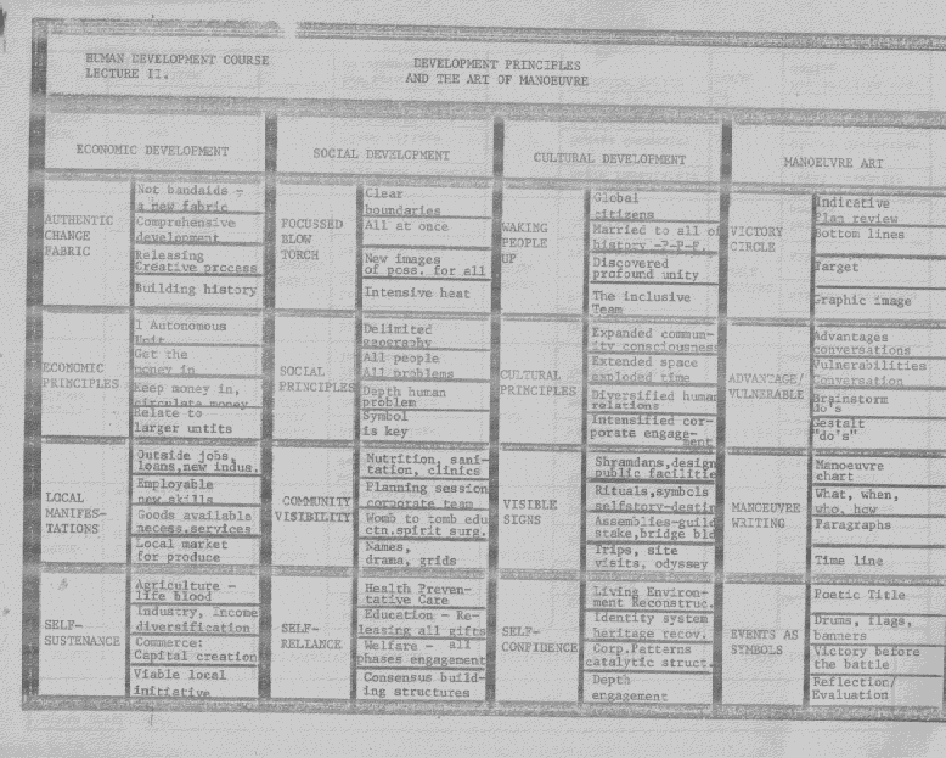 |
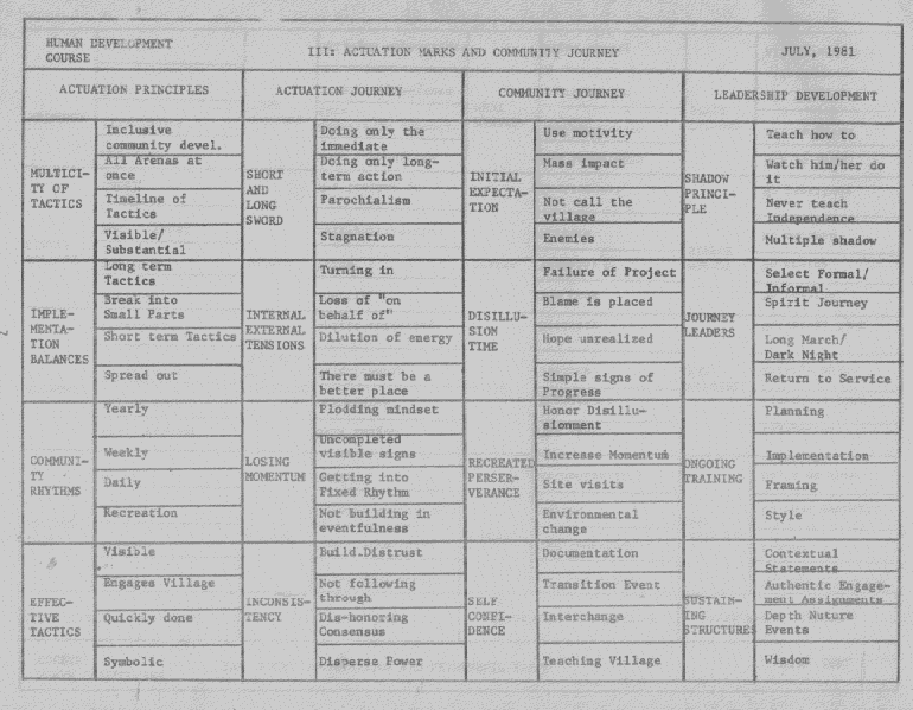 |
|
|
|
|
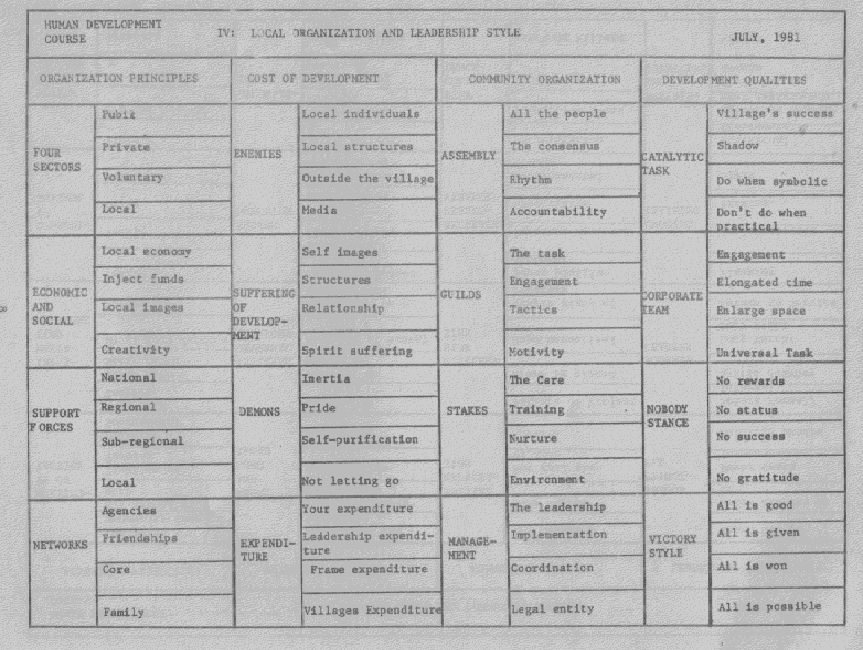 |
|
|
|
|
|
|
|
|
|
|
|
|
|
|
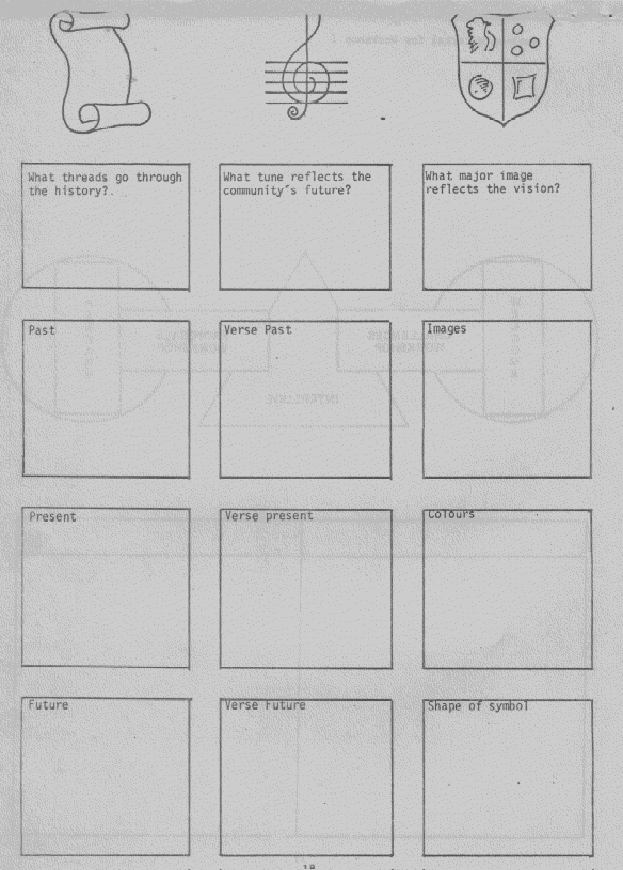
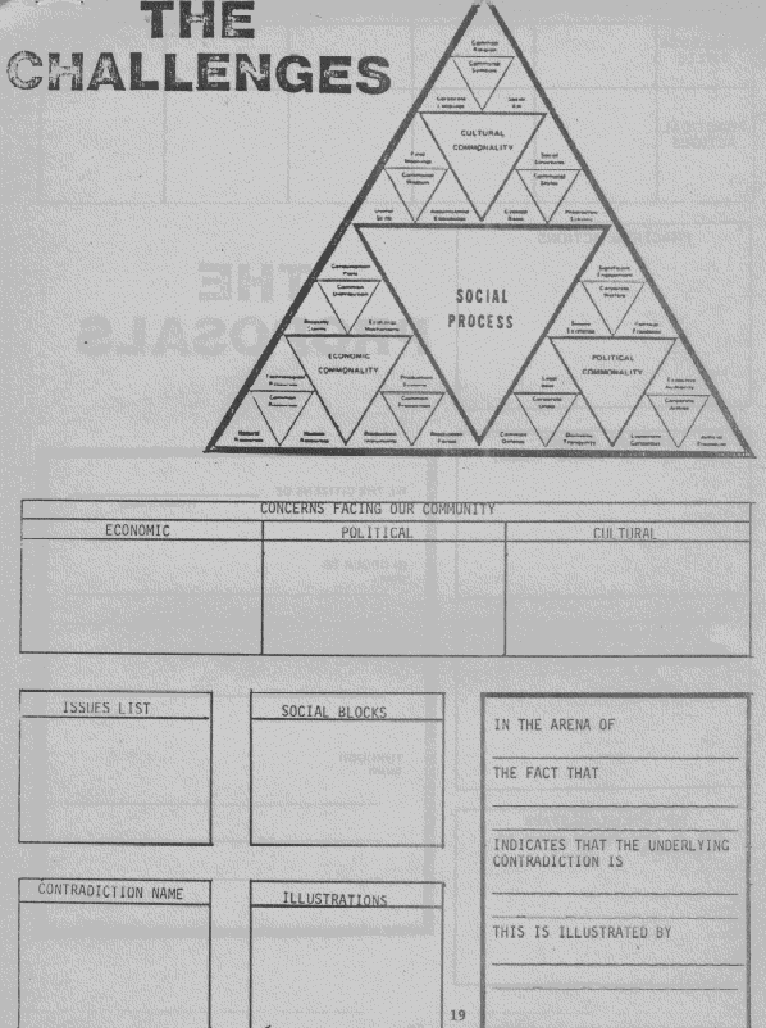
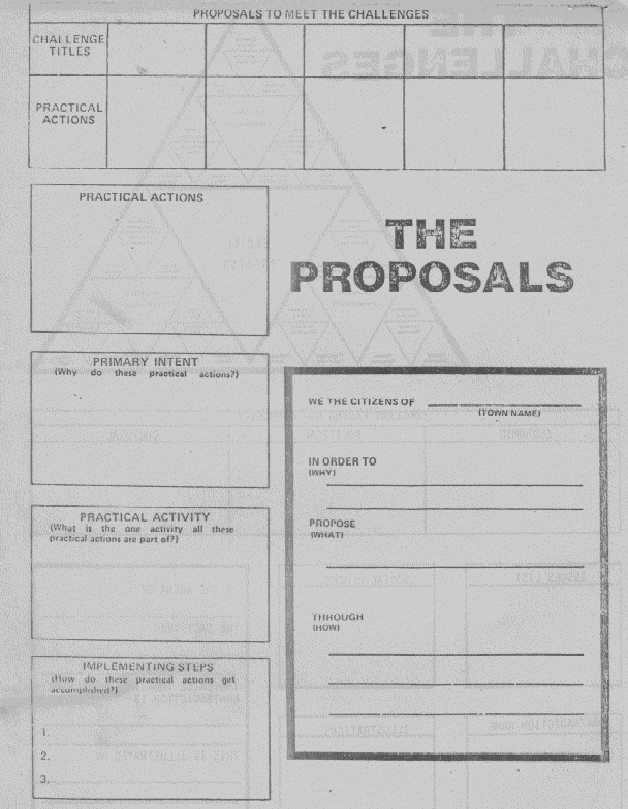
|
|
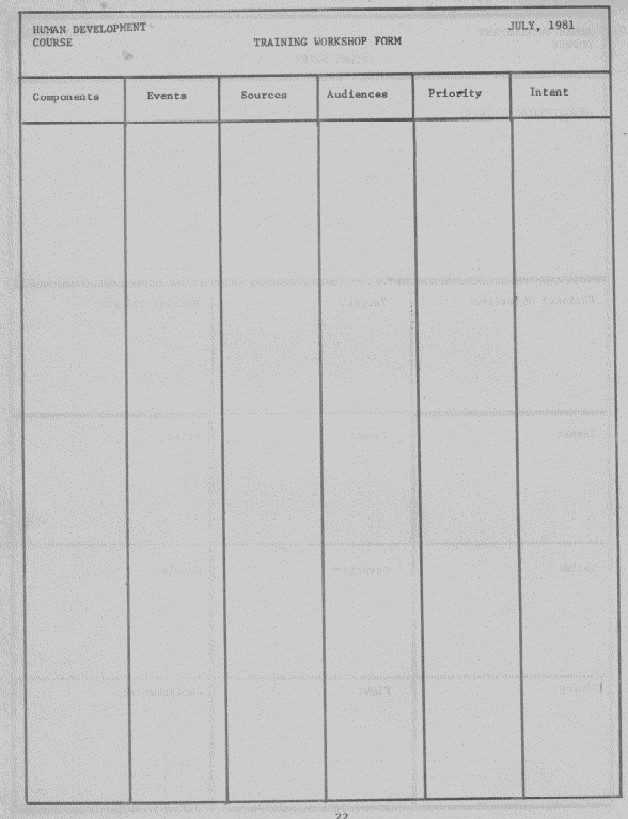
HUMAN DEVELOPMENT COURSE
| |
| 1. Give your name and the community you were born in. Who can I name the people on this side of the room?2. Give your name and the community you are living in now? Who can name the people on that side of the room?3. Give your name and say what fascinates you about your local community.4. What is your greatest concern about community today?5. What is the biggest struggle in developing local community? |
| 1. Present a drawing of some community. Point out the landmarks, housing, main roads, symbolic places, gathering places, shopping area, schools, recreation areas, garbage.2. What do you notice?3. Where would you add something?4. Where would you move something?5. How would you ease the traffic flow?6. How make the place more pleasant?7. What is the key to this living environment? |
|
1. Draw an outline of a week: 7 days with four side Categoriesnorning, afternoon, evening and night.2. Put in black the time you sleep; in blue, your work time; in red, meal time; in yellow, family time, and white for other time Put each one on the wall.3. What colour covers the greatest amount of space? The least amount of space? No space?4. In order to spend more time with the community, what would you change?5. What have you learned about time today? |
|
1. Once in a flood, people worked 20 to 22 hours a day for 3 days filling sand bags. In one harvest season my family worked from 3 a.m. to 10 or 11 p.m. for 2 weeks. When have you seen people work like this?2. What kinds of situations do people engage in like this, besides crisis?3. What is in these situations that allow people to work like this?4. What are the elements of this kind of engagement?5. How can a village engage the people fully in doing development?6. What would you have to do to have your community fully engaged? |
| 1. Context: this is a new course we are teaching around the globe, and are always trying to improve. Value participants wisdom. What do you remember from this course? ~2. What was most helpful?3. What would you do differently next time?4. When you meet someone and they ask what you were doing, what will you say about this weekend?5. What is the first thing you intend to do when you return to your local community? |